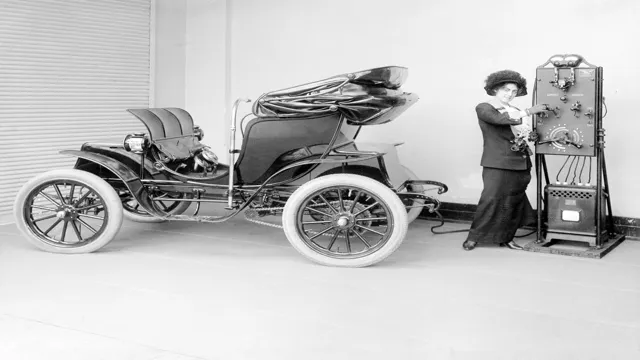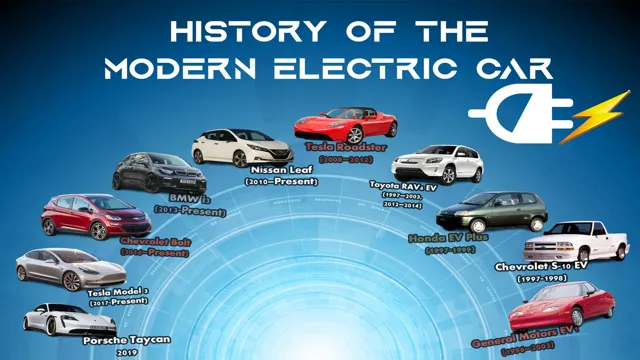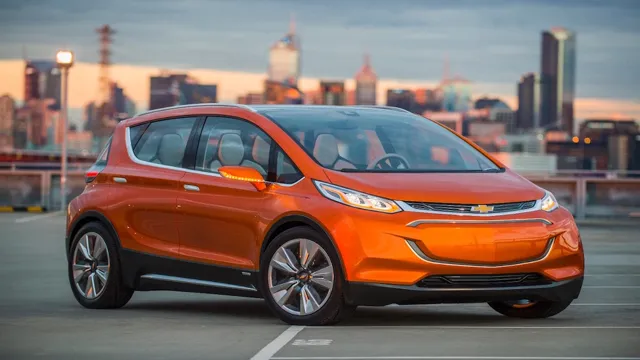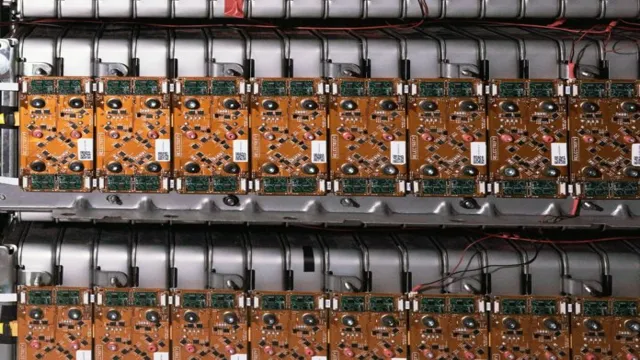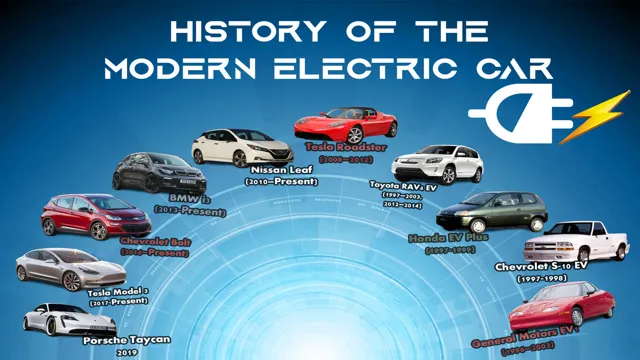Revolutionizing the Road: Tracing the Historical Journey of Electric Cars in the United States
Electric cars are taking the world by storm, but their history in the United States goes beyond recent times. In fact, electric vehicles have been around since the 19th century. The first electric car made an appearance in the late 1800s and quickly gained popularity among the wealthy elite.
However, as gasoline-powered cars became more prevalent, electric vehicles fell out of favor. The 1970s saw a brief resurgence in electric cars, but due to limited technology, their range was severely lacking. It wasn’t until the early 2000s that electric cars began to make a comeback, and today they are more popular than ever.
In this blog, we’ll take you on a journey through the history of electric cars in the USA, examining their rise, fall, and triumphant return.
Early Innovations
The history of electric cars in the US dates back to the early innovations of the late 19th century. In 1891, the first electric automobile was introduced by William Morrison, followed by Thomas Davenport and Robert Anderson who both created electric cars in the early 1830s. However, due to the high cost of batteries and the lack of infrastructure, the popularity of electric vehicles declined in the US and was overshadowed by gasoline-powered cars.
It was not until the 1990s when electric cars reemerged with the introduction of General Motors’ EV1 and Toyota’s Prius, which both generated significant public interest in electric vehicles. Today, with advancements in battery technology and the push for cleaner alternatives to fossil fuels, electric cars have become increasingly popular and common on US roads. The history of electric cars in the US proves that innovation and technological progress are the driving factors that push society towards a sustainable future.
Thomas Davenport and the First Electric Motor
Thomas Davenport was an early inventor who made significant contributions to the development of electric motors. In 1834, Davenport created the first electric motor that utilized a rotary motion. This invention sparked a breakthrough in the industrial revolution, as the electric motor could be used in a variety of applications such as powering machines, vehicles, and appliances.
Davenport used electromagnetic principles to create his motor, which consisted of a battery, a commutator, and a series of electromagnets. His idea was simple and elegant in its design and paved the way for further innovation and advancements in the field of electromechanics. The electric motor has become an integral part of modern society, and it all started with the creative genius of Thomas Davenport.
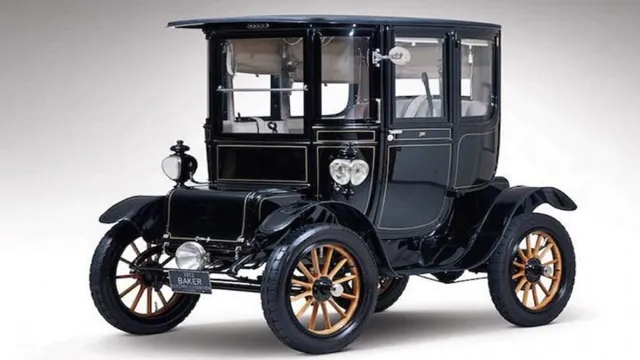
Electricity-Powered Taxis in New York City
Electricity-Powered Taxis in New York City Early Innovations Electricity-powered taxis in New York City might sound like a modern concept, but it’s been around for more than a century. In the early 20th century, electric taxis were the norm on New York City streets. In fact, in 1899, there were as many as 60 electric cabs operating in the city.
These early taxi models were capable of speeds of up to 20 miles per hour, and they used batteries that needed to be changed every 25-40 miles of driving. However, the idea of using electricity to power taxis slowly phased out in favor of gasoline-powered vehicles. It wasn’t until the 21st century that we saw a renewed interest in electric-powered taxis, with the emergence of companies like Tesla and their electric-powered vehicles.
In recent years, taxi services such as Uber and Lyft have also begun using electric vehicles in their fleets, helping to reduce their carbon footprint and promote a more sustainable and eco-friendly transportation option. As New York City continues to lead the charge in sustainable transportation, we can expect to see more and more electric taxis on the streets.
The Rise and Fall of Electric Cars
The history of electric cars in the US is a tale of excitement and disappointment. In the early 1900s, electric vehicles were all the rage, with women in particular finding them easier to operate and maintain than gas-powered cars. However, the introduction of the Ford Model T and the expansion of gas stations made gasoline-fueled vehicles more accessible and popular, leading to a decline in sales of electric cars.
In recent years, electric vehicles have resurged in popularity, with advancements in technology, government incentives, and growing concerns about climate change driving the demand. Today, electric cars are becoming increasingly mainstream, with many of the major car manufacturers offering electric models. However, obstacles such as range anxiety, battery availability, and high costs still exist and need to be addressed before electric cars can take over completely.
Despite the challenges, the history of electric cars shows that the shift towards more sustainable and eco-friendly transportation is possible.
The Emergence of Gasoline Cars
When cars first hit the market, electric vehicles (EVs) were the standard. However, the emergence of gasoline cars quickly made electric cars obsolete. In the early 1900s, gasoline cars were more comfortable, faster, and cheaper than their electric counterparts.
As a result, they quickly became the norm. Although electric cars never fully disappeared, they became less prevalent as gasoline cars became more sophisticated and easier to use. It wasn’t until recently that EVs have once again begun to gain popularity, thanks in large part to advancements in battery technology.
While gasoline cars may have dominated the market for more than a century, it seems that electric cars may be on track to take over in the coming years.
The Negative Perception of Electric Cars
Electric cars have been around for over a century, but it wasn’t until the early 2000s that they began to gain more attention. Unfortunately, even though electric cars have many benefits, they also suffer from a negative perception. There are several reasons for this, including misconceptions about their range, concerns about charging infrastructure, and reluctance to adopt new technologies.
In the late 2000s, sales of electric cars began to rise, but they hit a bump in the road during the 2010s when gasoline prices dropped, and automakers shifted their focus away from electric vehicles. However, in recent years, electric cars have seen a resurgence in popularity, driven by a renewed focus on sustainability and environmental responsibility. As more people become aware of the benefits of electric cars, such as reduced emissions, quieter operation, and lower operating costs, it is likely that the negative perception of electric cars will continue to fade away.
The Impact of Oil Crises on Electric Cars
Electric Cars, Oil Crises, Impact The history of electric cars has seen its fair share of ups and downs. Initially, they were popular in the late 1800s before being replaced by gasoline-powered vehicles. However, with the oil crises of the 1970s, electric car interest peaked once again.
The fuel shortages and price spikes caused drivers to seek alternatives to gasoline-powered vehicles, and electric cars were seen as a viable solution. However, with the subsequent drop in oil prices in the 1980s, interest in electric cars waned, and the focus shifted back to oil-powered vehicles. Fast forward to the early 2000s and another oil crisis in the form of skyrocketing prices reignited interest in electric cars.
Today, with a growing concern for the environment and a push towards renewable energy sources, electric cars have once again gained popularity. The impact of oil crises on electric cars has been significant, shaping their rise and fall, and serving as a reminder of the importance of diversifying our energy sources.
Recent Developments
The history of electric cars in the US has seen a lot of recent developments. One of the biggest milestones in the industry occurred in 2010 when Tesla introduced its first all-electric car, the Model S. Since then, other major car manufacturers have entered the market with their own electric vehicle offerings.
The popularity of electric cars has also been bolstered by government incentives, such as tax credits and rebates, as well as a growing concern about environmental impact. Additionally, advancements in battery technology have made electric cars more practical for daily use, allowing them to travel greater distances on a single charge. With more options and increased accessibility, it’s clear that the future of electric cars in the US is brighter than ever.
The Resurgence of Electric Cars
Electric cars are making a comeback and recent developments in their technology have made them more accessible to the average consumer. With advancements in battery technology, electric vehicles can now offer longer ranges and faster charging than ever before. The convenience of charging at home has also become more available, as more households install charging stations.
Additionally, governments around the world are offering incentives for people to switch to electric cars including tax credits and subsidies. This resurgence of electric cars has piqued people’s interest and has many wondering if they should make the switch. While the initial cost may be higher than traditional gas-powered cars, the savings on fuel and maintenance over time can make up for the difference.
It’s an exciting time for the industry and we can only expect further advancements in the technology of electric cars.
Government Support for Electric Cars
In recent years, there have been several developments in government support for electric cars. Some countries have implemented policies such as tax incentives and rebates to encourage the purchase of electric vehicles. For example, in the United States, buyers of electric cars can receive a federal tax credit of up to $7,500 depending on the make and model of the vehicle.
Additionally, some states offer additional incentives such as rebates and reduced registration fees. In Europe, several countries have implemented similar policies, and some have even set goals for phasing out gas-powered vehicles entirely in the coming years. These policies aim to not only reduce emissions but also stimulate the growth of the electric vehicle market.
As more and more people begin to consider electric cars as a viable option, it is likely that government support will continue to play a significant role in promoting their adoption.
The Future of Electric Cars
Electric cars have come a long way in the United States. They have a long history that dates back to the early 1800s, where the first electric vehicle was invented. However, it wasn’t until the early 2000s that electric cars started gaining popularity due to a surge in environmental awareness and the need for sustainable transportation.
Since then, electric cars have made significant strides in technology, innovation, and affordability. In the future, electric cars will continue to play a vital role in reducing carbon emissions and promoting sustainable transportation. With advancements in battery technology and charging infrastructure, electric cars are poised to be the go-to choice for personal and public transportation in the coming decades.
The history of electric cars in the US has been eventful, and their future looks bright. As we continue to push towards a sustainable future, electric cars will undoubtedly be at the forefront of it all.
Conclusion
As the history of electric cars in the US has shown us, this form of transportation may have had a rocky start, but it is definitely here to stay. From the early days of clunky prototypes to the sleek and streamlined vehicles we see today, electric cars have come a long way. They represent a more sustainable future, and with the advancements in technology and infrastructure, they are becoming more accessible to drivers all over the country.
So, while gas-powered cars may have reigned supreme for a long time, it’s clear that electric cars are the wave of the future. In the words of Thomas Edison, who famously predicted this shift over 100 years ago, “Electricity is the thing. There are no whirring and grinding gears with their numerous levers to confuse.
There is not that almost terrifying uncertain throb and whirr of the powerful combustion engine. There is no water circulating system to get out of order – no dangerous and evil-smelling gasoline and no noise.” So, in conclusion, electric cars are not only good for the environment, they’re also a smarter, quieter, and more efficient way to travel.
It’s time to step into the future and join the electric car revolution!
FAQs
When did electric cars first become popular in the US?
Electric cars actually had a surge in popularity in the early 1900s, but then gas-powered cars became more dominant. In recent years, electric cars have become more popular again.
What were some of the earliest electric cars in the US?
Some of the earliest electric cars in the US were the Woods Electric and the Baker Electric. These were introduced in the early 1900s.
What has been the recent trend in the adoption of electric cars in the US?
In recent years, the adoption of electric cars has been increasing. According to the Edison Electric Institute, electric vehicle sales increased by 81% from 2017 to 2018.
What are some of the factors that have contributed to the increased adoption of electric cars in the US?
Some of the factors that have contributed to the increased adoption of electric cars include: government incentives, lower battery costs, increased availability of charging infrastructure, and consumer awareness about the benefits of electric cars.

